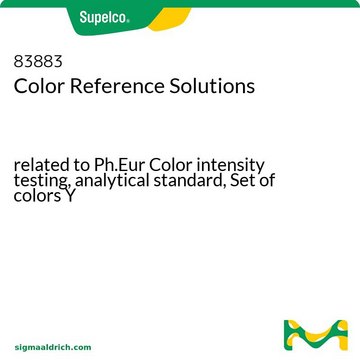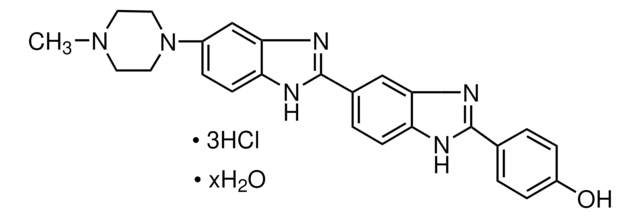11663925910
Roche
Mycoplasma PCR ELISA
About This Item
Produits recommandés
Utilisation
sufficient for 96 reactions
Fabricant/nom de marque
Roche
Conditions d'expédition
dry ice
Température de stockage
−20°C
Spécificité
Application
Mycoplasma PCR ELISA kit has been used for the detection of contamination by mycoplasma/acholeplasma/ureaplasma in cell cultures or other sample materials.
Caractéristiques et avantages
Sample material: Cell culture supernatants, cell suspensions, or other samples
Sensitivity: At least 1 x 103 colony-forming units (cfu) of mycoplasma per milliliter of culture medium
- High sensitivity: Detects 1 - 10fg of DNA, corresponding to approximately 1 - 20 gene copies per reaction (at least 103cfu/ml)
- Broad detection range: All mycoplasma, acholeplasma, and ureaplasma species tested thus far were detected
- Simplicity: Detects all mycoplasma using the same protocol, as opposed to the culture method that requires different culture conditions for different mycoplasma species
- Fast results: The entire procedure can be performed in one day
- Easy handling of large numbers of samples: The ready-to-use mix and ELISA detection procedure allow fast and semi-automatic sample processing
Conditionnement
Séquence
Autres remarques
Composants de kit seuls
- Lysis Reagent
- Neutralization Reagent
- PCR Mix ready-to-use
- Denaturation Reagent
- Hybridization Buffer
- Biotinylated Capture Probe
- Washing Buffer 10x concentrated
- Anti-Digoxigenin-POD antibody
- Conjugate Dilution Buffer
- TMB Substrate Solution
- Stop Reagent
- Positive Control DNA
- Streptavidin-coated Microplate
- Adhesive Plate Cover Foils
Mention d'avertissement
Warning
Mentions de danger
Conseils de prudence
Classification des risques
Eye Irrit. 2 - Skin Irrit. 2 - Skin Sens. 1
Code de la classe de stockage
12 - Non Combustible Liquids
Classe de danger pour l'eau (WGK)
WGK 2
Point d'éclair (°F)
does not flash
Point d'éclair (°C)
does not flash
Certificats d'analyse (COA)
Recherchez un Certificats d'analyse (COA) en saisissant le numéro de lot du produit. Les numéros de lot figurent sur l'étiquette du produit après les mots "Lot" ou "Batch".
Déjà en possession de ce produit ?
Retrouvez la documentation relative aux produits que vous avez récemment achetés dans la Bibliothèque de documents.
Les clients ont également consulté
Articles
Mycoplasmas are potential contaminants in mammalian cell culture manufacturing. All products produced in cell culture to be tested for the presence of Mycoplasma.
Detect mycoplasma contamination in cell cultures three ways: culture test, DNA stain test, or mycoplasma PCR test. Mycoplasma elimination kits rid cultures of contamination.
Protocoles
Mycoplasma contamination of cell cultures is a serious issue impacting cell model validity. PCR testing for mycoplasma is an inexpensive, sensitive, and specific method for detecting contamination.
Notre équipe de scientifiques dispose d'une expérience dans tous les secteurs de la recherche, notamment en sciences de la vie, science des matériaux, synthèse chimique, chromatographie, analyse et dans de nombreux autres domaines..
Contacter notre Service technique

